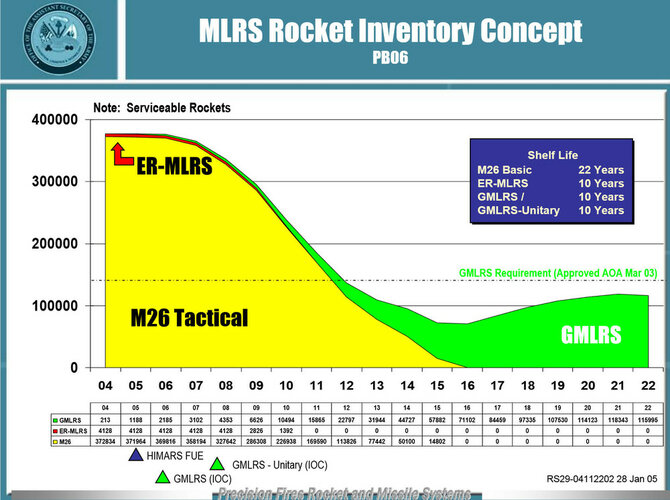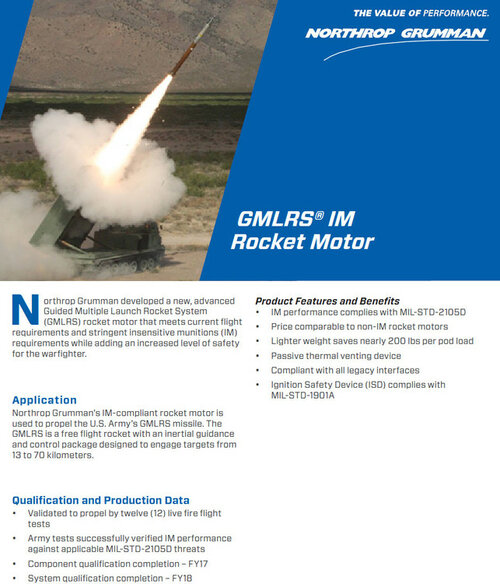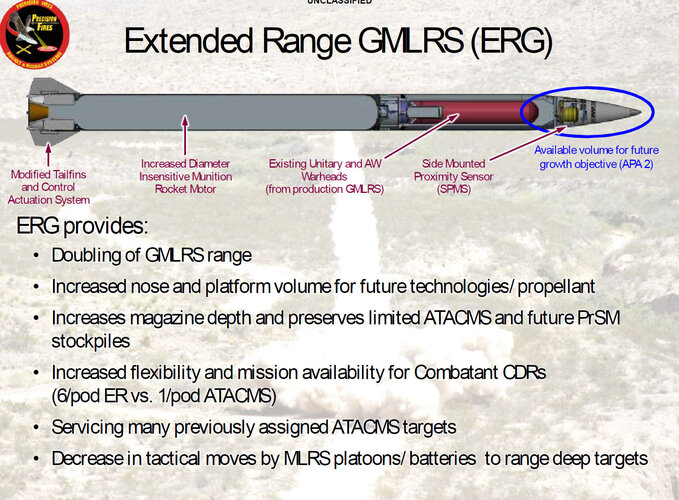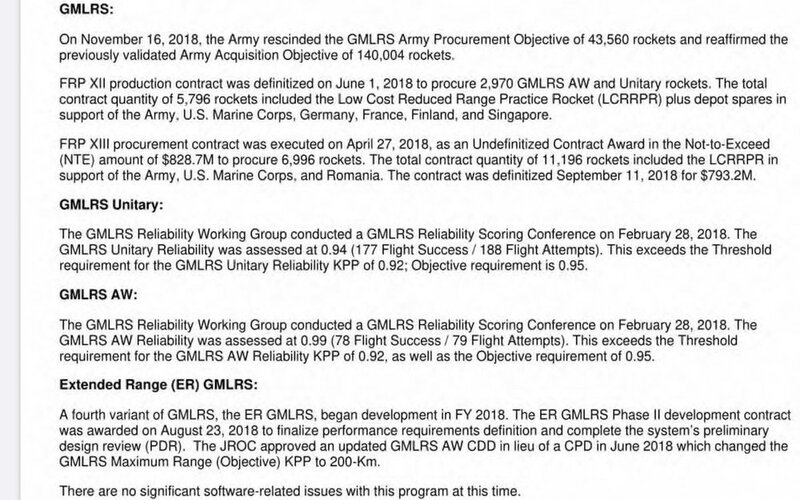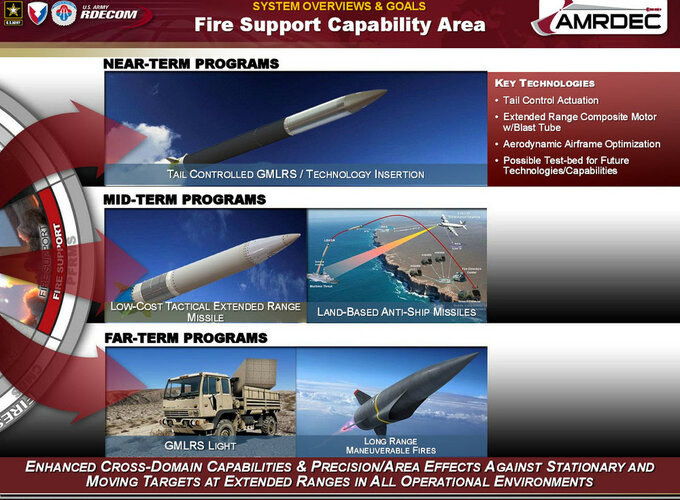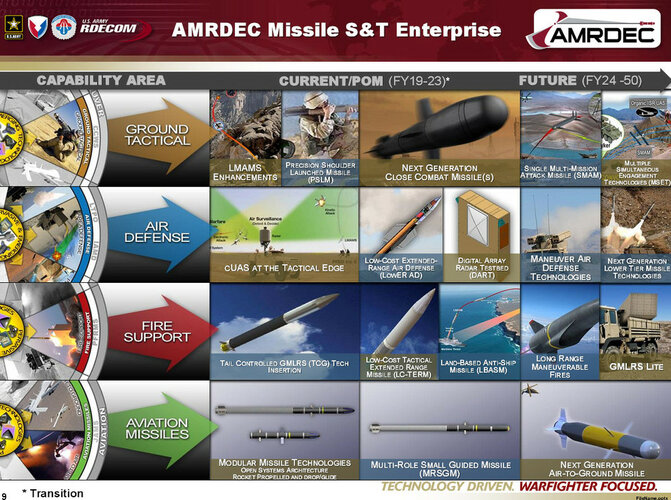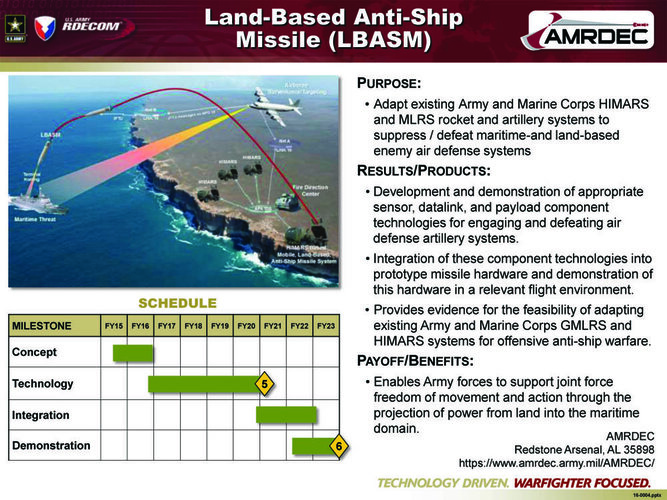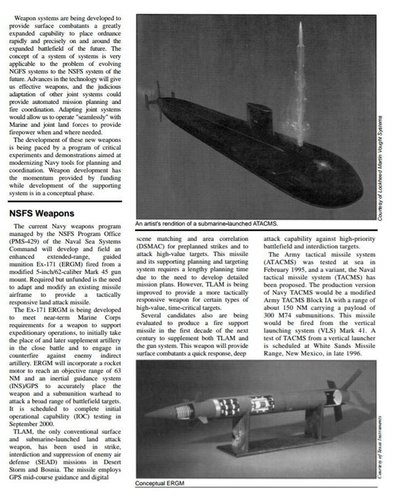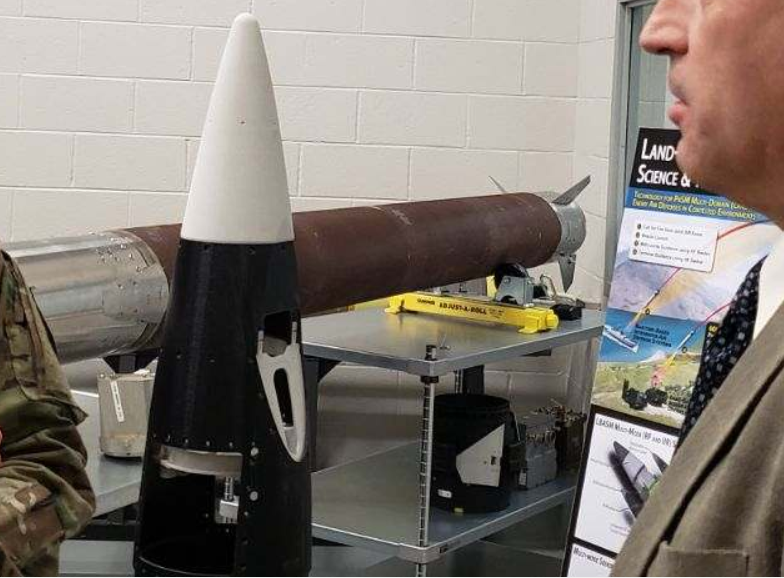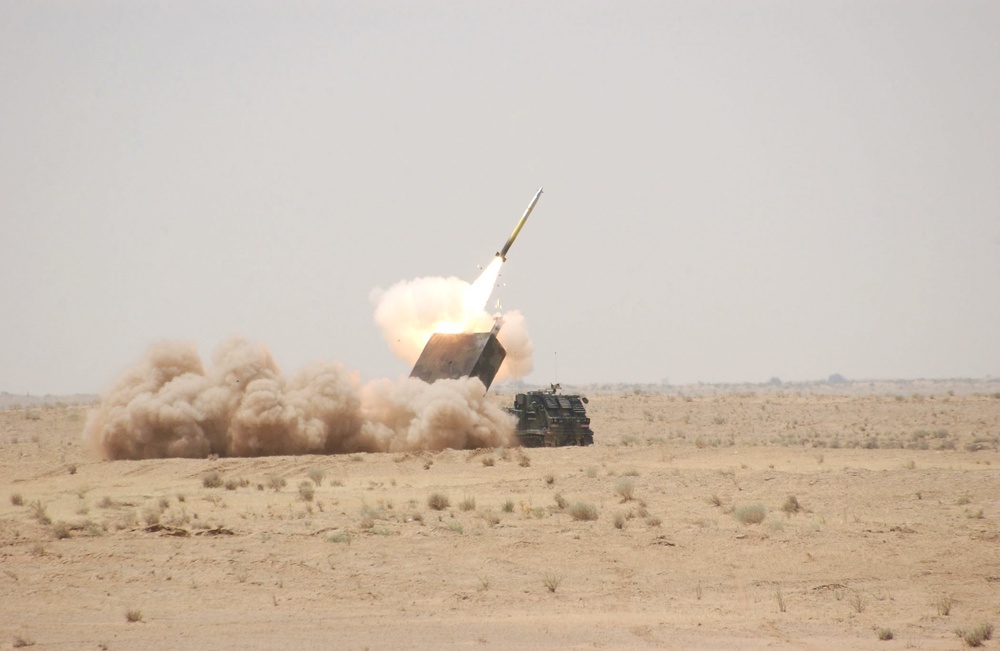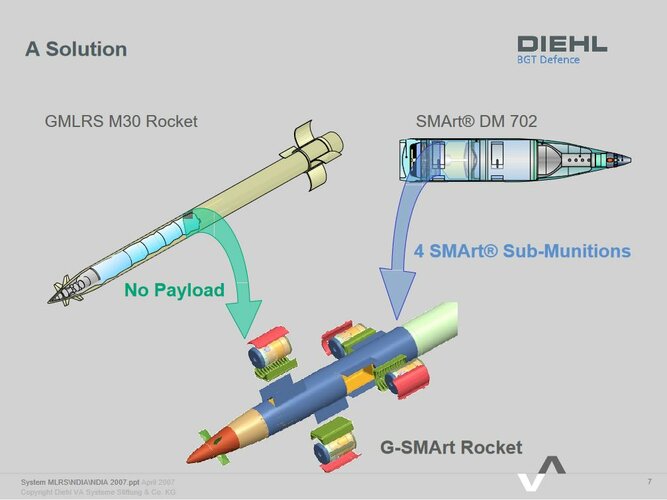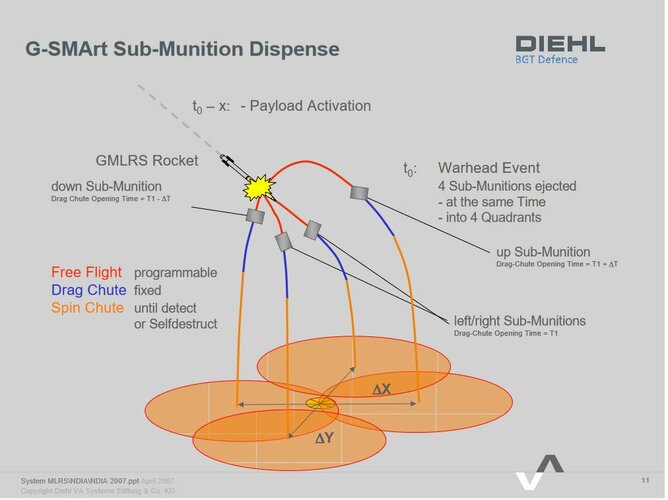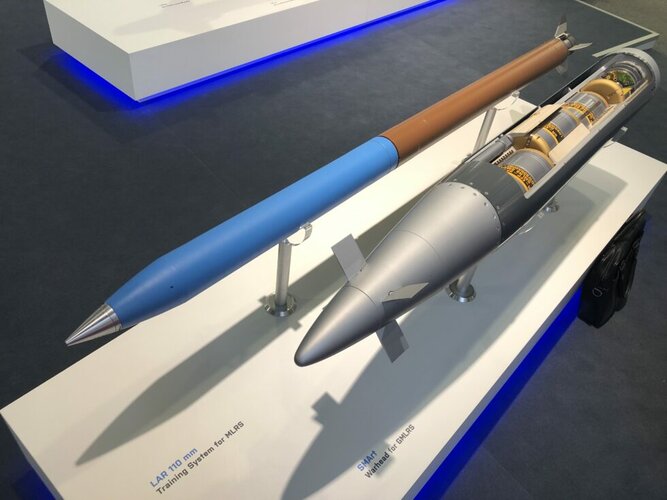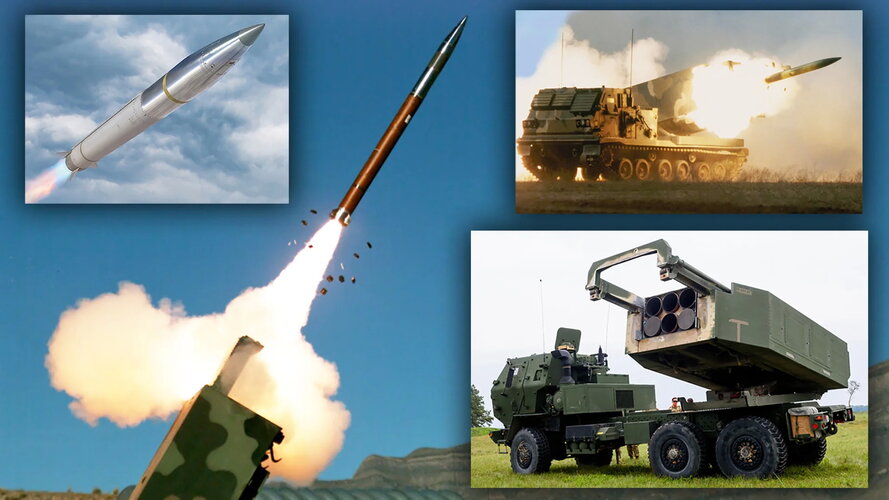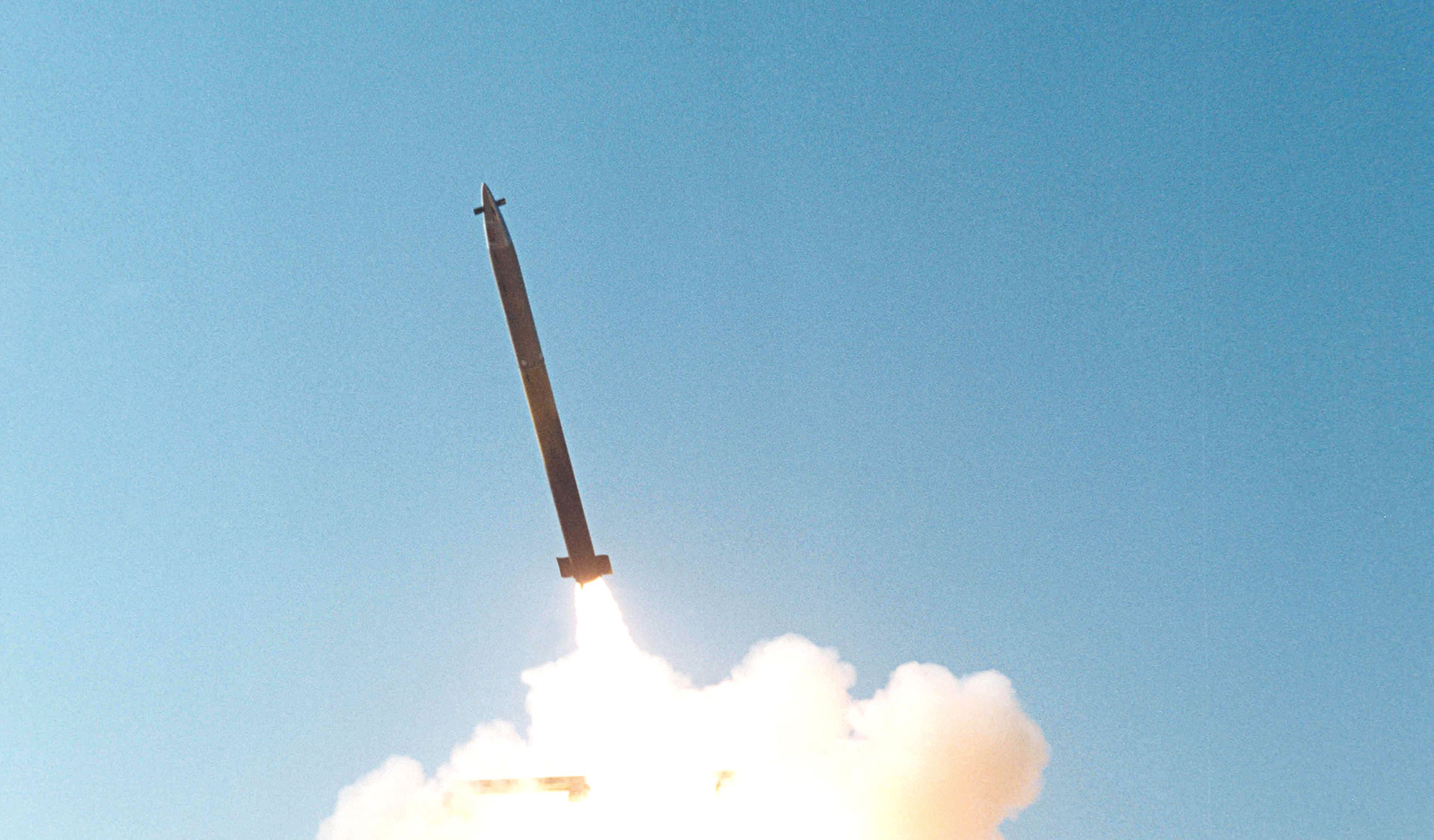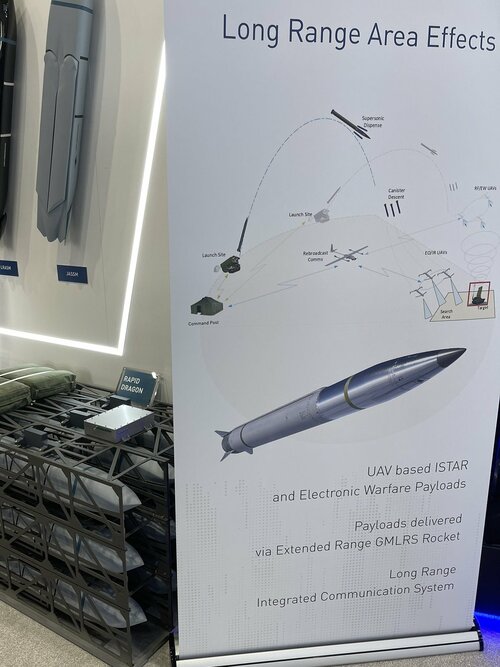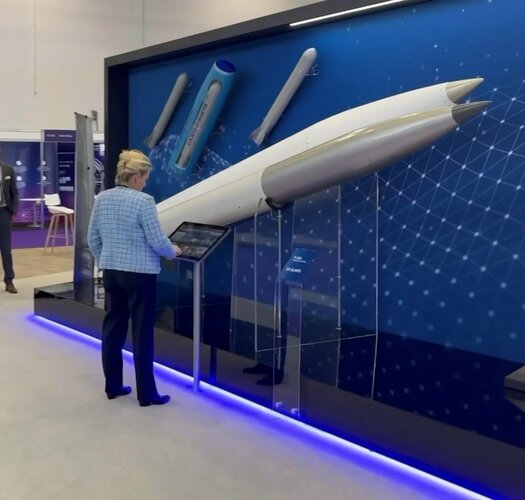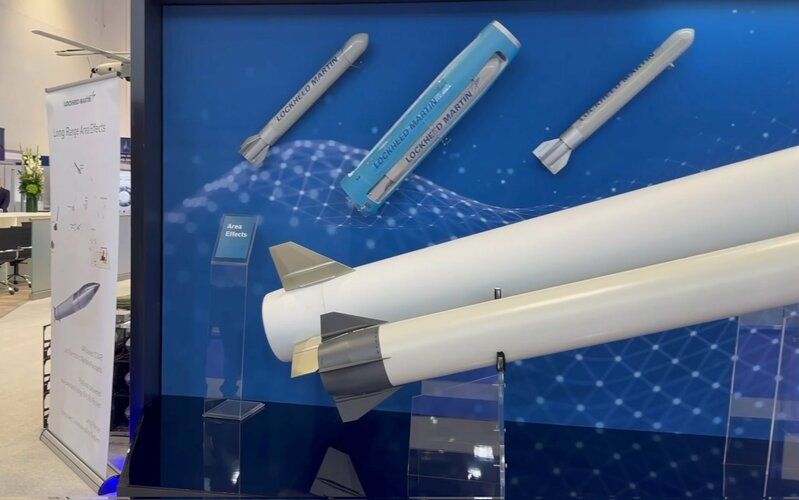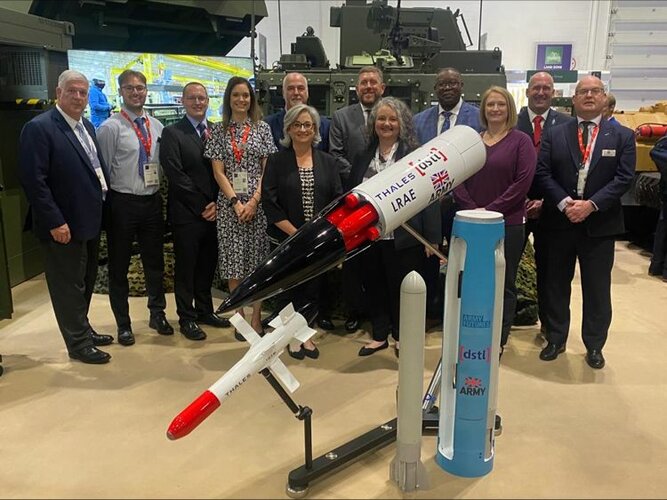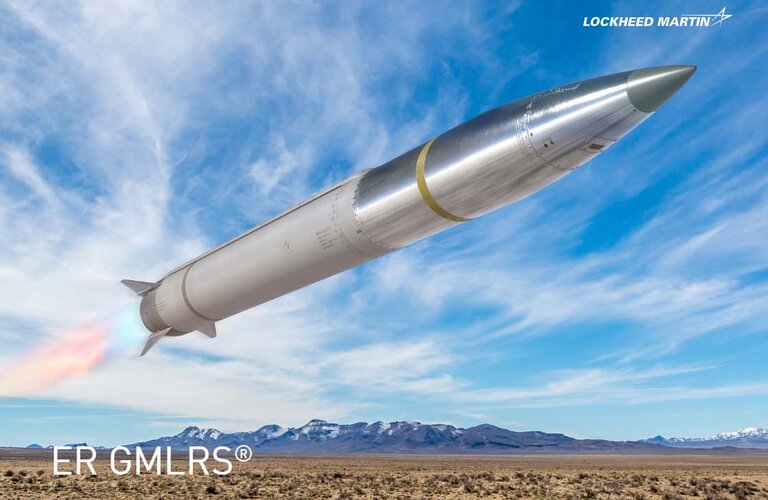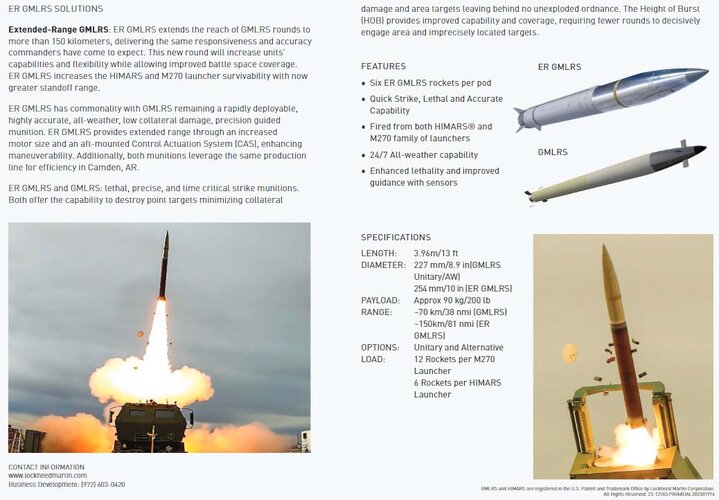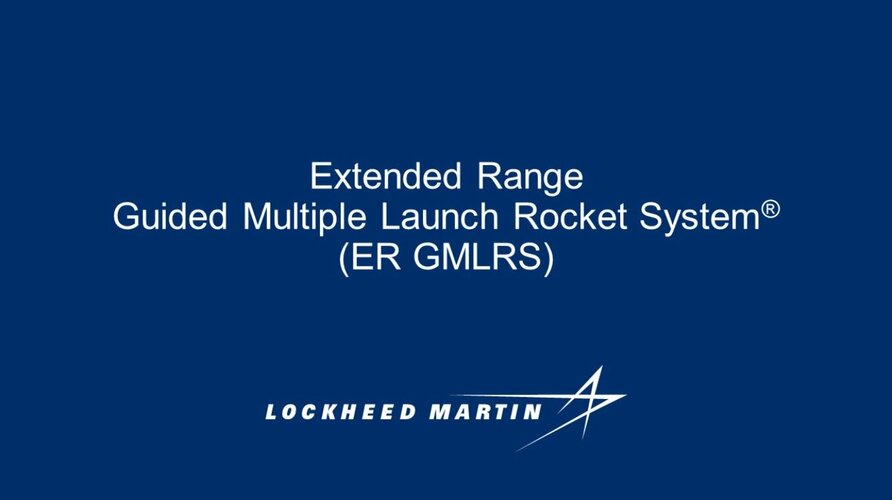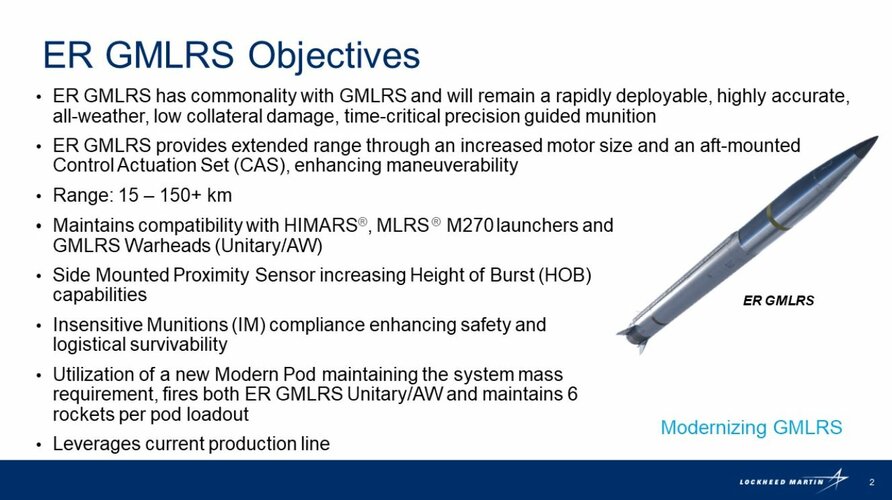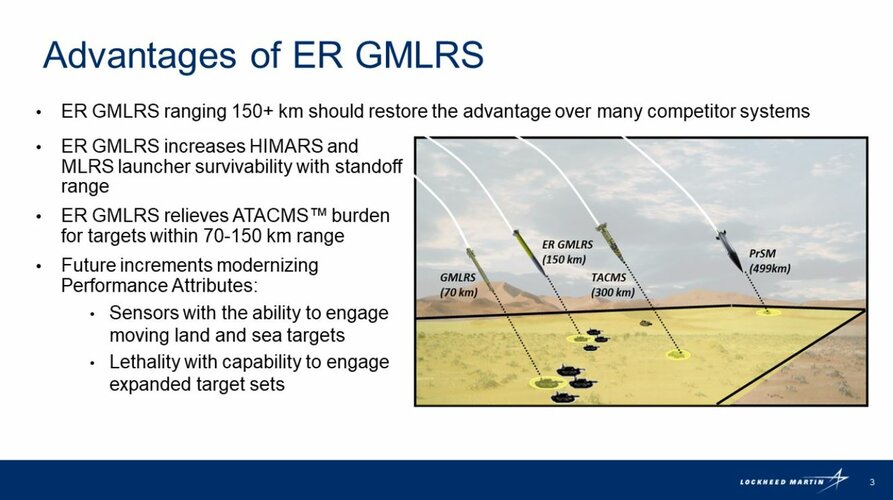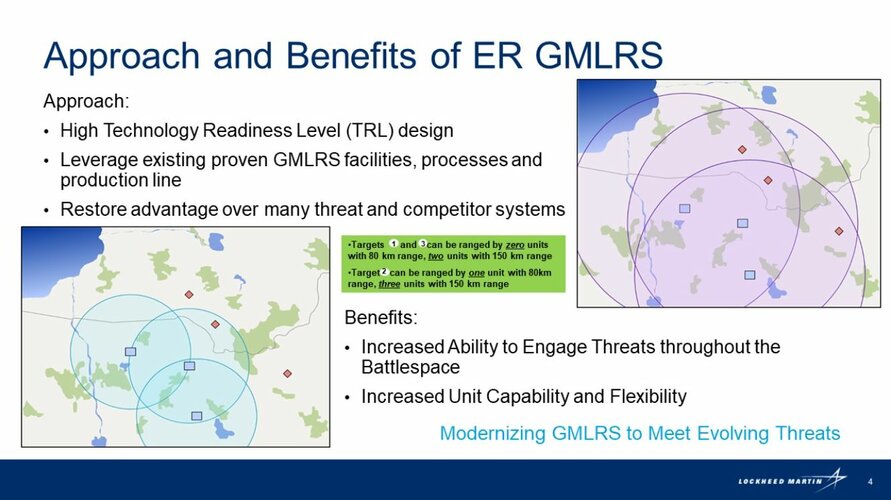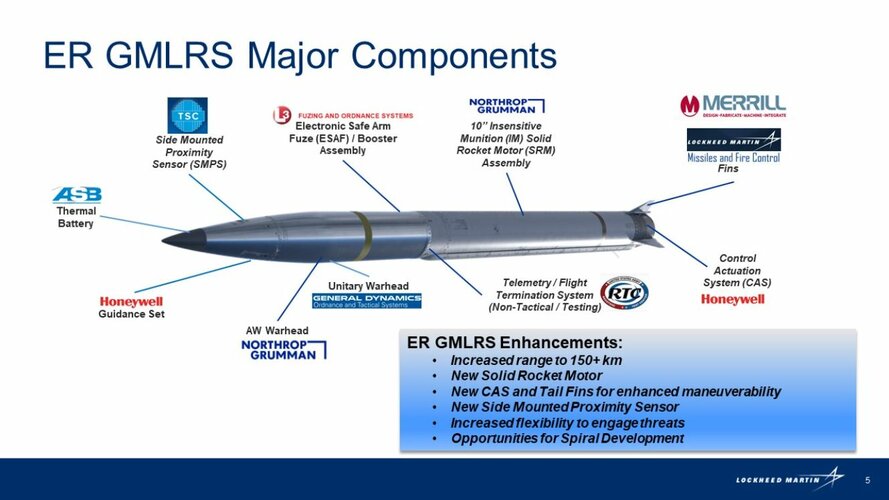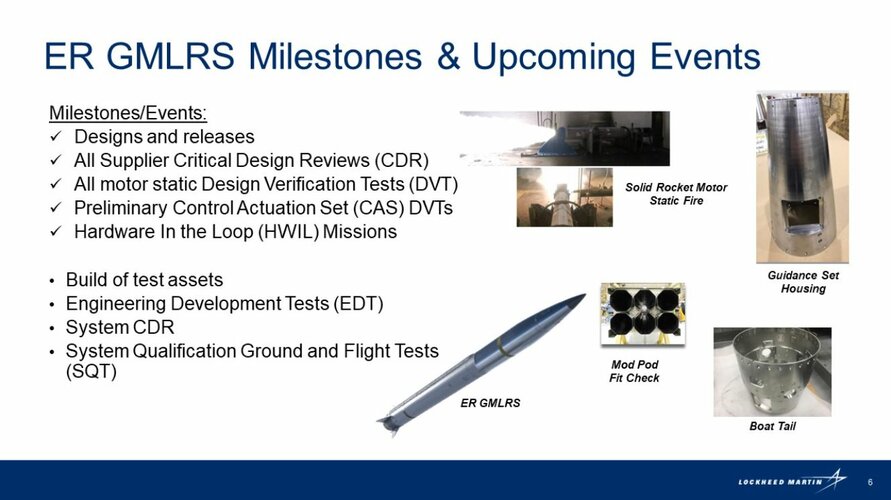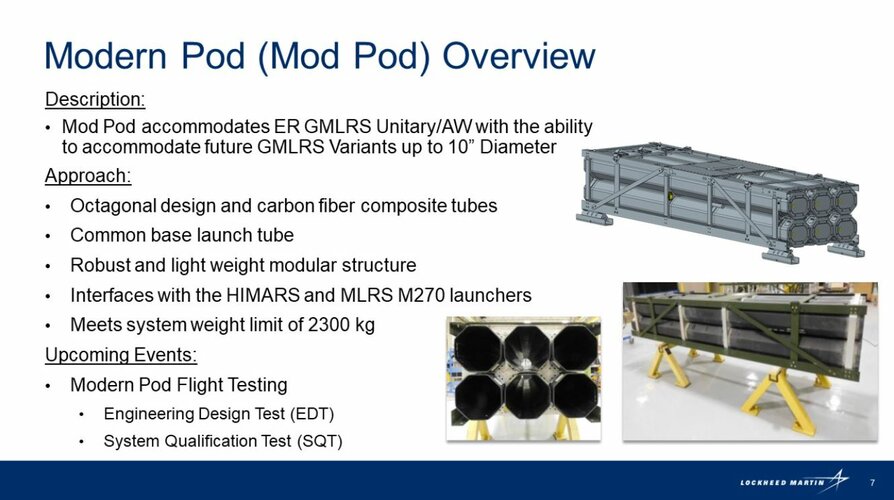DALLAS, Sept. 01, 2023 – Lockheed Martin (NYSE: LMT) successfully demonstrated its next-generation Extended-Range
GMLRS (ER GMLRS) in a flight test at White Sands Missile Range, New Mexico, firing the round from the U.S. Army’s HIMARS® launcher.
"This test demonstrates nearly double the range, while maintaining the precision GMLRS is known for,” said Jay Price, vice president of Precision Fires at Lockheed Martin Missiles and Fire Control. “Lockheed Martin is committed to advancing this critical capability on a rapid timeline for our Army customer, and this test moves ER GMLRS one step closer to fielding.”
ER GMLRS met success criteria in the first 150-kilometer test for flight trajectory, extended range and accuracy from launch to impact. The product also successfully integrated with HIMARS and achieved overall missile performance.
Prior to launch, the rocket pod underwent Stockpile to Target Sequence (STS) testing. This effort simulates cumulative effects ER GMLRS will meet in the field between factory and launch for the life of the system and demonstrates durability of the missile and launch pod container.
